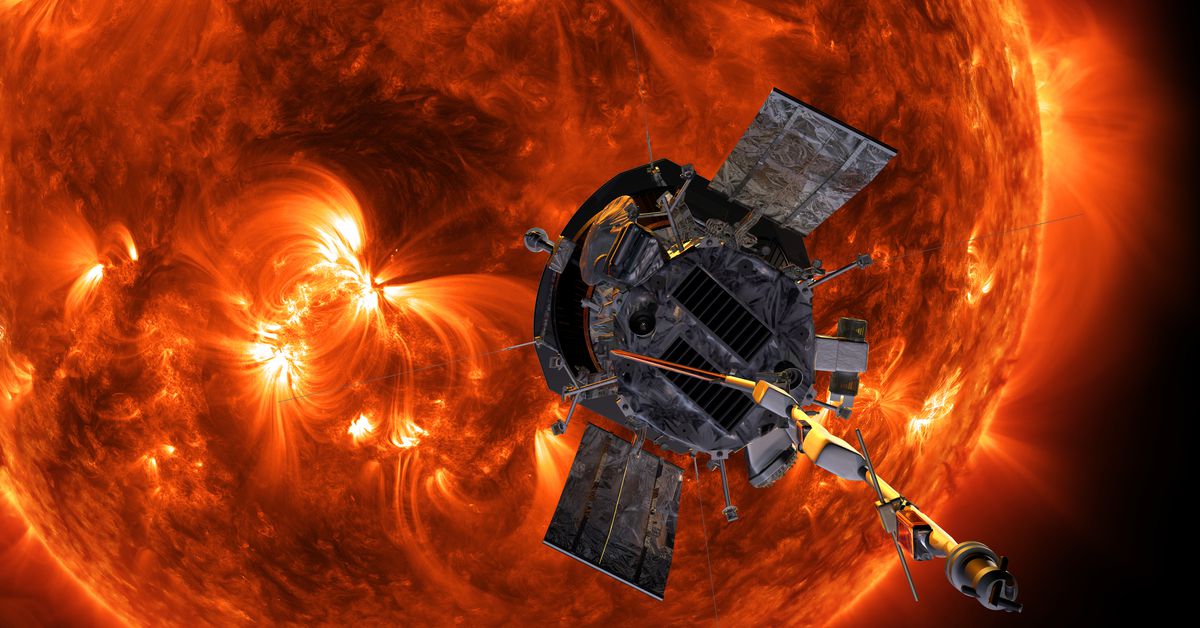Introduction
In a groundbreaking achievement, NASA’s Parker Solar Probe has reached a historic milestone by transmitting its first signal back to Earth. Sent 3.8 million miles from the Sun’s surface on December 26th, the probe confirmed its operational status and health, marking an unprecedented proximity to our star. This milestone underscores the probe’s advanced engineering and resilience in extreme solar conditions.
Mission Overview
Launched in 2018 by NASA and Johns Hopkins Applied Physics Laboratory, the Parker Solar Probe was designed to study the Sun’s corona—the Sun’s outer atmosphere, which is hotter than the surface itself. To achieve this, the probe is equipped with a sun-facing heat shield capable of withstanding extreme temperatures reaching approximately 2,500 degrees Fahrenheit, while the rest of the spacecraft remains cooler at just 85 degrees Fahrenheit. This design ensures that the probe can survive the intense radiation and heat emanating from the Sun.
Close Approach to the Sun
The probe’s journey toward the Sun was fraught with precision and engineering marvels. Launched on December 20th, it executed its closest approach to the Sun on December 24th at an impressive speed of 430,000 miles per hour, or approximately 690,000 kilometers per hour. This velocity is faster than most spacecraft have ever achieved in interstellar travel, making the probe uniquely suited for its mission.
During this close encounter, the probe was out of communication with Earth to avoid potential disruptions caused by solar interference. The lack of contact allowed NASA and the probe’s team to focus solely on gathering data without external distractions.
This flyby is not just a scientific milestone; it also provides invaluable insights into one of the most dynamic regions of our solar system—the Sun itself. By studying the interactions between the Sun’s corona, its strong magnetic fields, and the surrounding solar wind, researchers hope to unravel some of the mysteries of solar activity.
Scientific Objectives
The probe’s mission is multifaceted:
-
Study Solar Wind Dynamics: The probe will provide detailed data on the composition and behavior of solar wind— a stream of charged particles ejected by the Sun at speeds close to light speed. By understanding solar wind, scientists can better predict space weather and its effects on Earth’s communication systems and satellites.
-
Heat Balance Study: As the probe approaches the Sun, it will monitor how high-energy particles are accelerated to nearly light-speed velocities. This process involves complex interactions between the Sun’s magnetic fields and the corona, offering insights into energy transfer mechanisms in extreme environments.
-
Testing Probe Durability: With its close encounter, the probe will push the limits of its engineering capabilities, testing the durability of its components under hyperthermal conditions. The success of this mission hinges on the probe’s ability to survive such intense solar radiation and retain operational integrity.
Mission Progress and Updates
Since its launch, the Parker Solar Probe has been operating flawlessly, with all systems functioning as designed. NASA has already begun analyzing the data transmitted by the probe during its closest approach. Key findings include confirmation of the probe’s thermal stability and successful transmission of critical operational signals.
In preparation for future discoveries, the probe is set to send detailed telemetry data on its status starting on January 1st. This will include information about its temperature fluctuations, radiation exposure, and overall health. These data points are crucial for refining models of solar activity and improving our understanding of the Sun’s inner workings.
Historical Significance
This mission represents a significant leap forward in space exploration. By bringing the probe closer to the Sun than any previous human-made object, NASA has opened new avenues for studying one of the most dynamic and complex celestial bodies in our solar system.
The success of this mission not only highlights the ingenuity of modern engineering but also sets a precedent for future space missions that may involve similar challenges. As we continue to explore the Sun and its surroundings, such endeavors will undoubtedly deepen our understanding of our home planet and its place within the broader cosmic context.
Conclusion
The Parker Solar Probe has achieved what many in the scientific community considered an almost Impossible feat. By harnessing cutting-edge technology and engineering principles, NASA has demonstrated that even the most extreme conditions can be overcome. This milestone is not just a testament to human ingenuity but also a step forward in our quest to unravel the mysteries of the Sun and its influence on Earth.
As the probe continues its journey inward toward the Sun, it will undoubtedly provide invaluable insights into one of the most enigmatic regions of our solar system. For now, NASA has successfully completed its first close encounter with the Sun—a reminder that scientific exploration is not just a goal but also an adventure waiting to happen.
